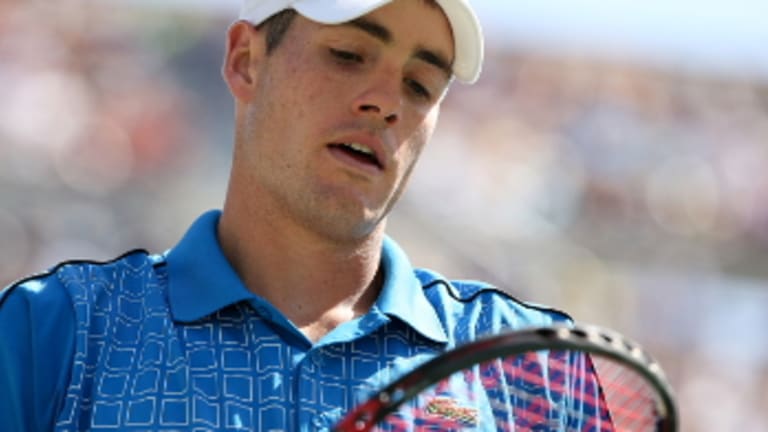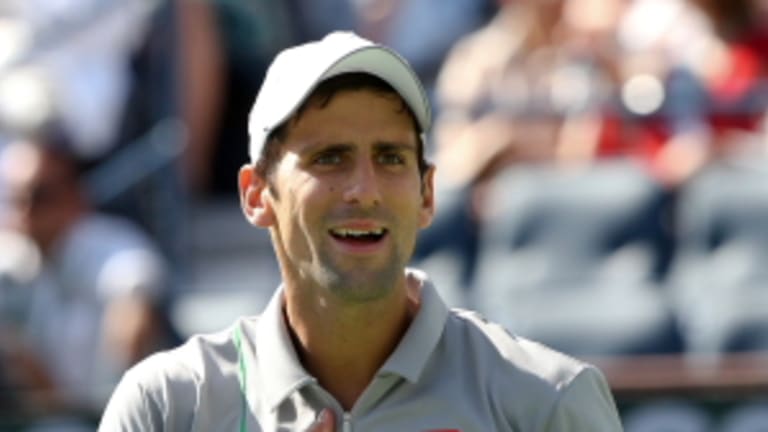INDIAN WELLS, CALIF.—We knew coming into the semifinals on Saturday that one player would be living by his serve. That was John Isner, of course. What we didn’t know was that another player, Roger Federer, would be doing the same—not just living by his serve, but soaring by it.
Federer had what he called “one of the best serving days of my career” in his easy, breezy 6-3, 6-1, one-hour-and-one-minute semifinal win over Alexandr Dolgopolov here on Saturday. Federer made 72 percent of first balls, won 83 percent of points on his second serve, and hit seven aces. He hit two of those aces to hold for 3-2, and another to hold for 4-3. That was essentially all he needed, because from that point on, Dolgopolov watched his game blow away in the wind—or shrivel in the desert heat, take your pick. The Ukrainian was broken when he went for too much on a forehand at 3-4; at 5-3, Federer closed the set with, naturally, an ace. That must have been all Dolgo could take, because when the second set started, he came out in exhibition mode. Some highly illogical shot selection got him broken in the opening game, and he never challenged Federer again. Dolgo finished with a dismal 12 winners and 25 unforced errors in a substance-less, concentration-free performance.


